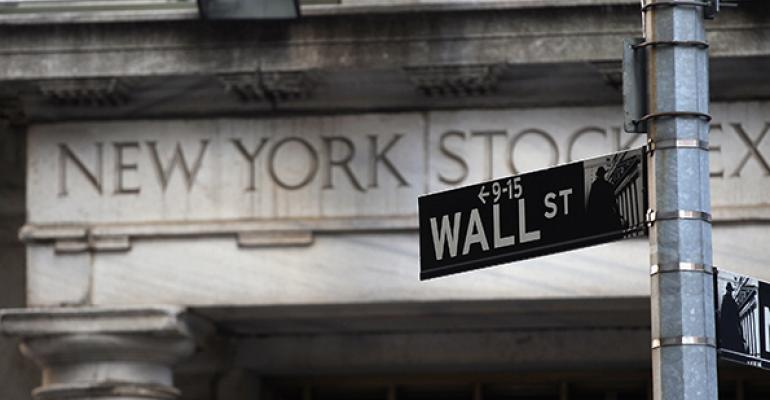(Bloomberg) -- Skepticism is one thing this rally hasn’t lacked.
Amid its biggest about-face in nine decades, a funny thing has happened in the U.S. stock market, where rather than loosen their grip bears have grown ever-more impassioned. They’ve sent short interest to an eight-year high and above $1 trillion, by one analyst’s math. Position reports from the Commodity Futures Trading Commission show mutual fund managers are more skeptical now than any time since at least 2010.
In short, disbelief is running rampant after $2 trillion was restored to share values in six months. A chorus of Wall Street prognosticators says that’s a big reason the rally can keep going.
“There’s an enormous demand coming,” said Thomas J. Lee, managing partner at Fundstrat Global Advisors LLC., in an interview with Bloomberg TV . “Retail investors are about to put a lot of money into the equity markets because they’re trend followers and the S&P has had two positive quarters in a row. Funds can’t keep a trillion short position, larger than March ’09.”
It started in August, when bearish investors sent bets against U.S. stocks above 4 percent of available shares for the first time in six years. They haven’t backed off since. By the end of February, the ratio climbed to 4.4 percent, the highest since 2008, according to exchange data compiled by Bloomberg. As of March 15, that level was 4.3 percent, equivalent to a short position just under $1 trillion.
Bearish bets are so widespread they’re skewing the market’s response to news in favor of rallies, according to a note to clients from JPMorgan Chase & Co. analysts led by Nikolaos Panigirtzoglou on April 1. The bank examined reactions in the MSCI World Index to economic indicators in the U.S. and Europe since January and said it found they were visibly larger when data exceeded forecasts than when they trailed them.
“Over the past six weeks, we had an equal amount of positive versus negative economic surprises in both the U.S. and euro zone, which in the absence of a position overhang should have been consistent with flat equity markets,” the analysts wrote. “Instead, the MSCI World Index is up by 10 percent.”
The embedded skepticism has now persisted through two major recoveries in global equities, the latest coming as central banks and rising crude prices fueled a five-week streak of gains in the S&P 500 through mid-March. In futures tracking the S&P 500, asset manager bearish contracts reached a four-year high on March 15, data from the CFTC show. They’ve only declined 2.1 percent since.
Though such positioning could be an ingredient in extending the rally, investors need something new to get excited about, said Jue Xiong, an analyst at Bank of America Corp. U.S. stocks on Tuesday capped the biggest two-day slide since Feb. 9 amid a dearth of evidence global growth is accelerating.
“We were pretty bullish and confident about this contrarian signal, just because the market was rallying and positioning was so low that asset managers would need to catch up and would be forced to buy,” said Xiong. “But at this point, futures positioning is still so low. It needs to be triggered by some event for the market to rally.”
In order to get back to the six-year average, current short interest would have to fall by 15 percent, data compiled by Bloomberg show. The last time it posted a drop of that size was after reaching a one-year high in September 2010. The S&P 500 gained 16 percent over the next six months.
There’s plenty of room for investor sentiment to improve. According to a Citigroup Inc. institutional equity survey dated April 1, more people think the market is likelier to fall 20 percent than gain 20 percent. Manager cash reserves are also above average, with Citi clients holding 9.3 percent of their total portfolio in cash, compared to 7.2 percent a year earlier.
Pessimism is also apparent in CFTC reports on the long leg of asset manager bets in benchmark indexes. Although long contracts on S&P 500 futures have gained 10.6 percent since the September low, positioning is still 23 percent below the five-year average.
Bullish futures contracts on technology-focused Nasdaq 100 Index are at the lowest level since September 2011. Combined with short contracts, asset managers are positioned the most bearish since October 2011. At the same time, the Nasdaq 100 has risen six out of the past seven weeks.
“I don’t think it’s a rally where people say, I declare the selloff is over and we’re going back to a new trend,” said Nick Sargen, who helps manage $46.2 billion as chief economist and senior investment adviser for Fort Washington Investment Advisors Inc. “A lot of times if sentiment turns unduly negative, then what you’ll see is it’s easier to surprise the stock market to the upside.”





